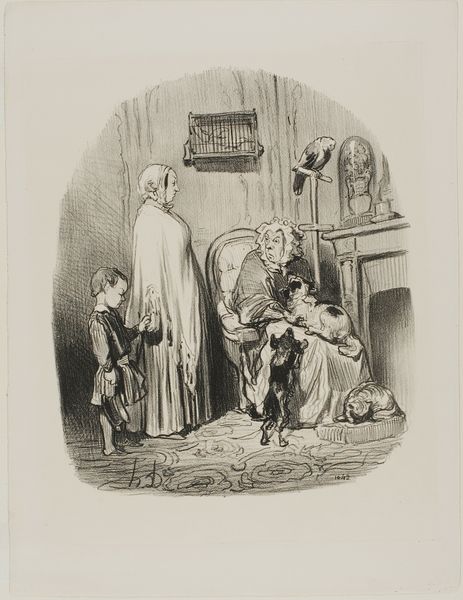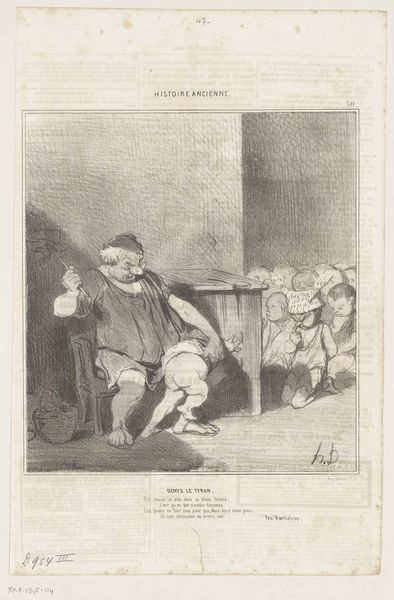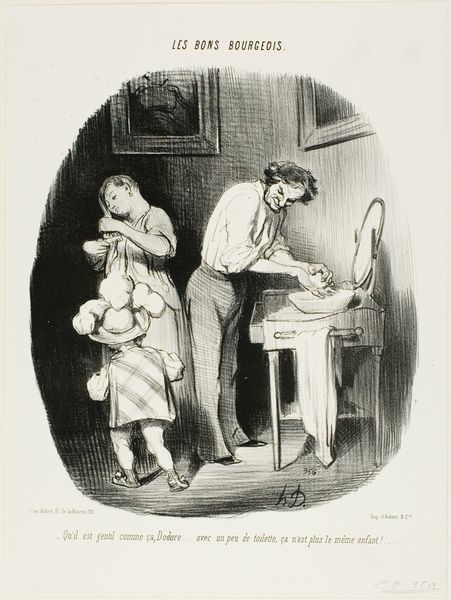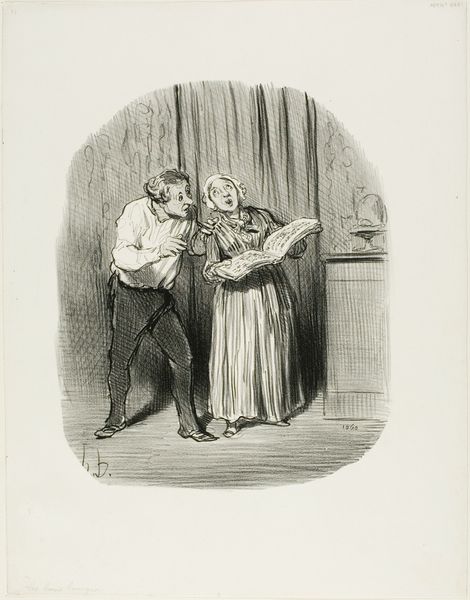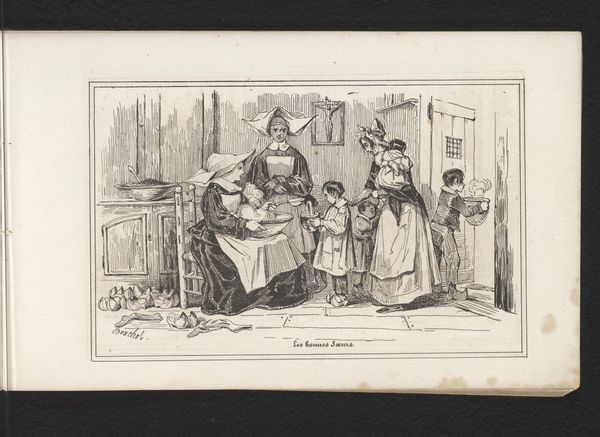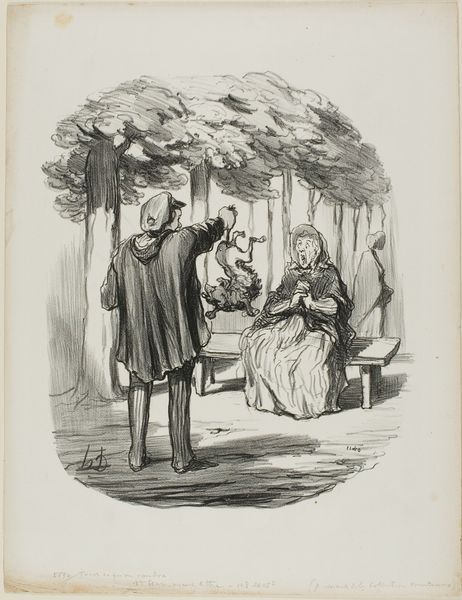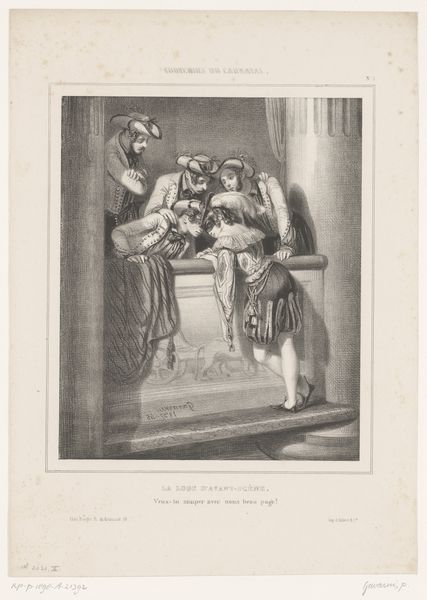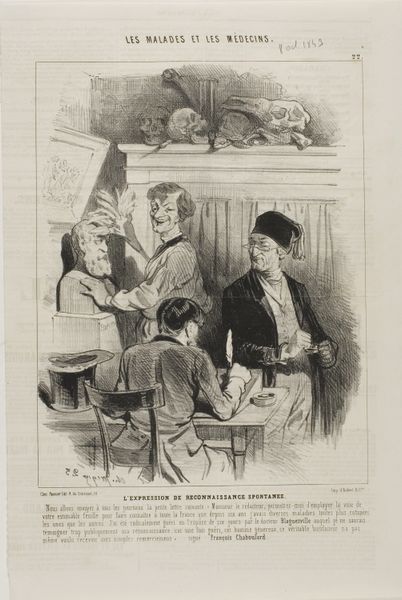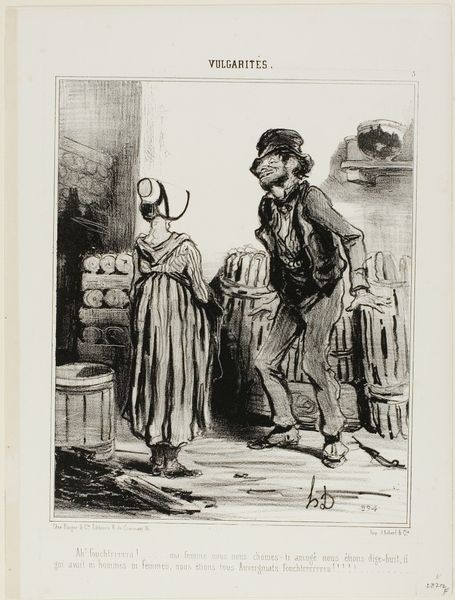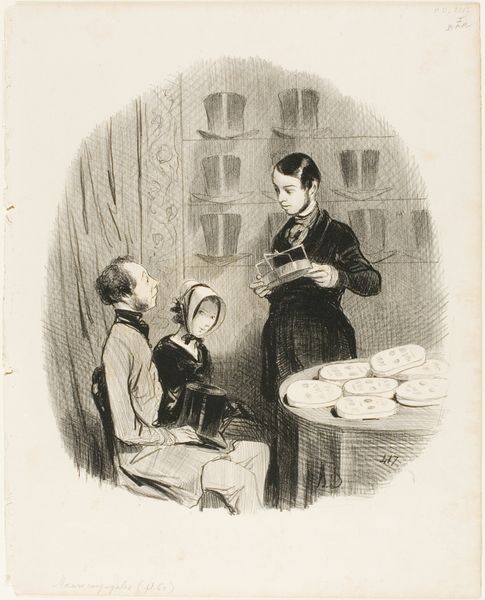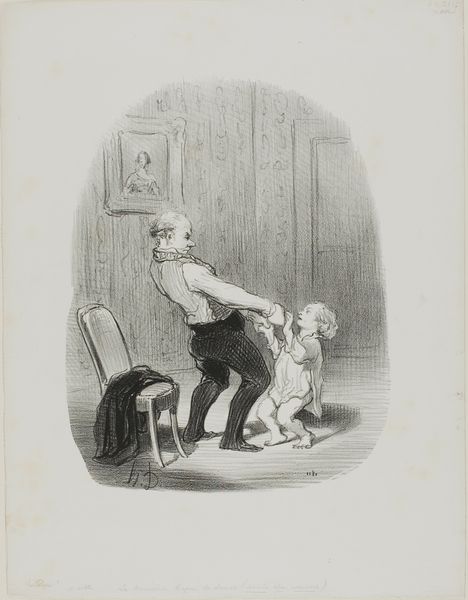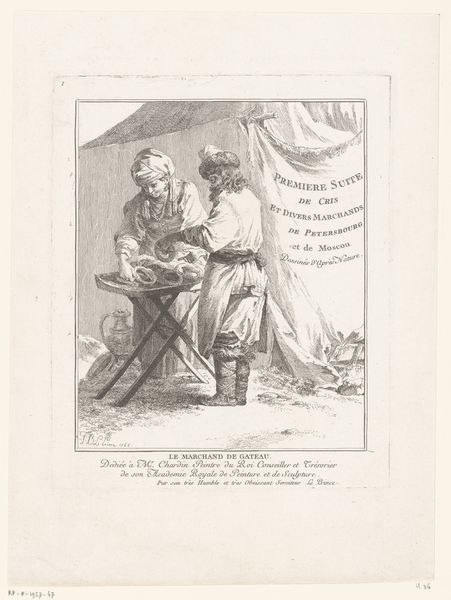
“Regular little drunk, he is!... he swallows it down like milk! Poor little darling... he is just like his father!,” plate 42 from Moeurs Conjugales 1842
0:00
0:00
drawing, graphic-art, lithograph, print, paper
#
drawing
#
graphic-art
#
lithograph
# print
#
caricature
#
paper
#
genre-painting
#
realism
Dimensions: 243 × 197 mm (image); 340 × 257 mm (sheet)
Copyright: Public Domain
Curator: This is Honoré Daumier’s lithograph, "Regular little drunk, he is!... he swallows it down like milk! Poor little darling... he is just like his father!,” plate 42 from Moeurs Conjugales, created in 1842. It’s currently held at The Art Institute of Chicago. Editor: What strikes me immediately is how raw the scene feels. The coarse lines of the lithograph emphasize the starkness of everyday life and highlight the difficult labor. It definitely catches my eye. Curator: Indeed. Daumier was known for his social and political critiques. This work encapsulates his sharp observations of bourgeois life in 19th-century France. Editor: And lithography allowed him to quickly reproduce images for mass consumption, a democratizing force in art, delivering potent social commentary straight to the public. He uses cheap material to depict labor exploitation; such a raw contrast. Curator: Precisely. The Moeurs Conjugales series, meaning "Conjugal Mores," often satirized marital relationships and familial roles within the context of emerging industrial society. The caption is an essential element in his critical imagery. Editor: It really underscores the artist's social awareness of how parental behaviors affect childhood development, with the kid literally being poured liquor at such a tender age. What really fascinates me is the printmaking process and Daumier’s choice of lithography. Curator: And don’t overlook how he employs caricature. It accentuates specific features to communicate societal critiques more impactfully to his contemporary audiences, such as gender and generational roles within evolving industrial and post-revolution France. Editor: This piece prompts thoughts on how material processes influence artistic intentions. And in that era, mass production in visual arts started gaining considerable traction for accessibility. Curator: I've always found Daumier’s work vital in examining the social landscape of his time, as we see how the imagery captures the public sentiment during monumental economic shifts. Editor: Absolutely. Reflecting on the materials and method employed emphasizes the widespread reach of Daumier's art, placing critical perspectives of social class firmly in the hands of common people.
Comments
No comments
Be the first to comment and join the conversation on the ultimate creative platform.
